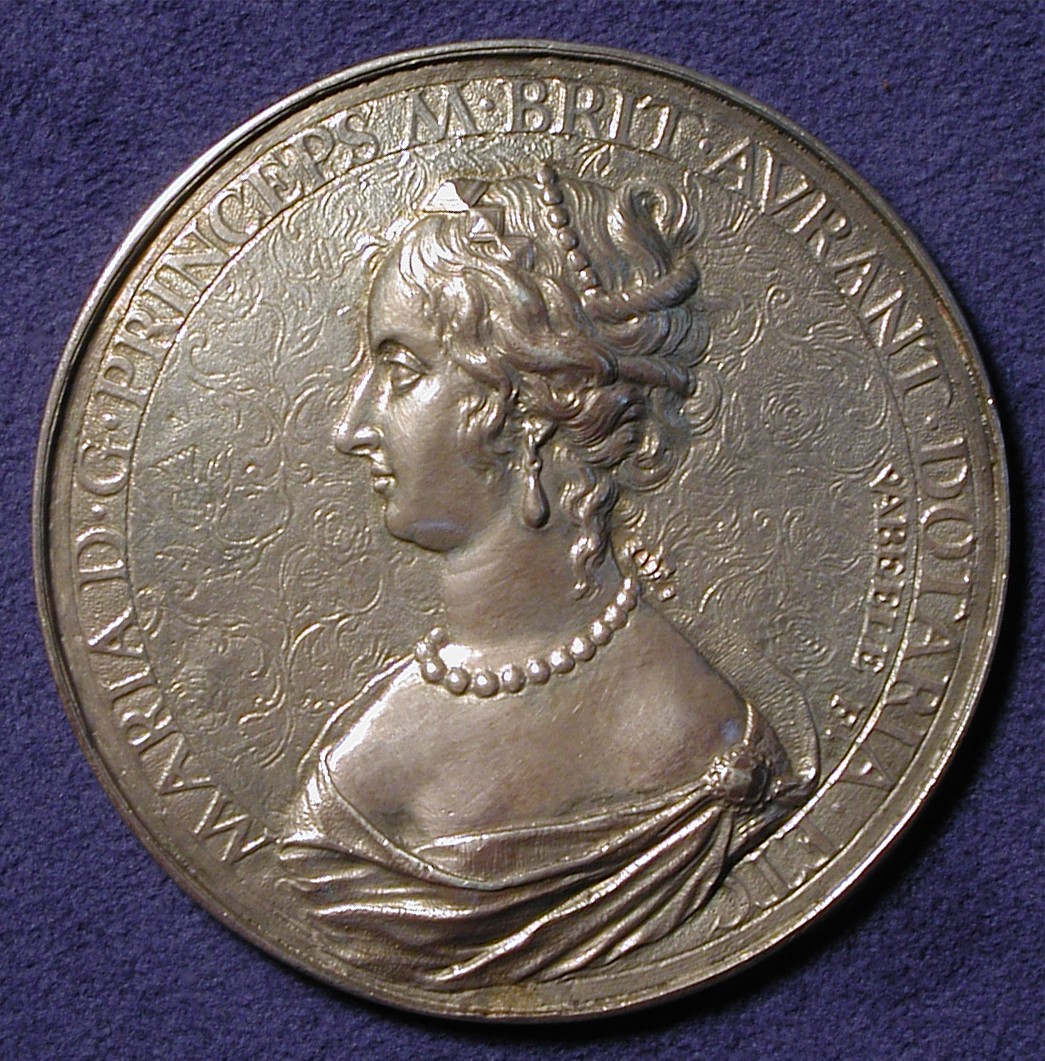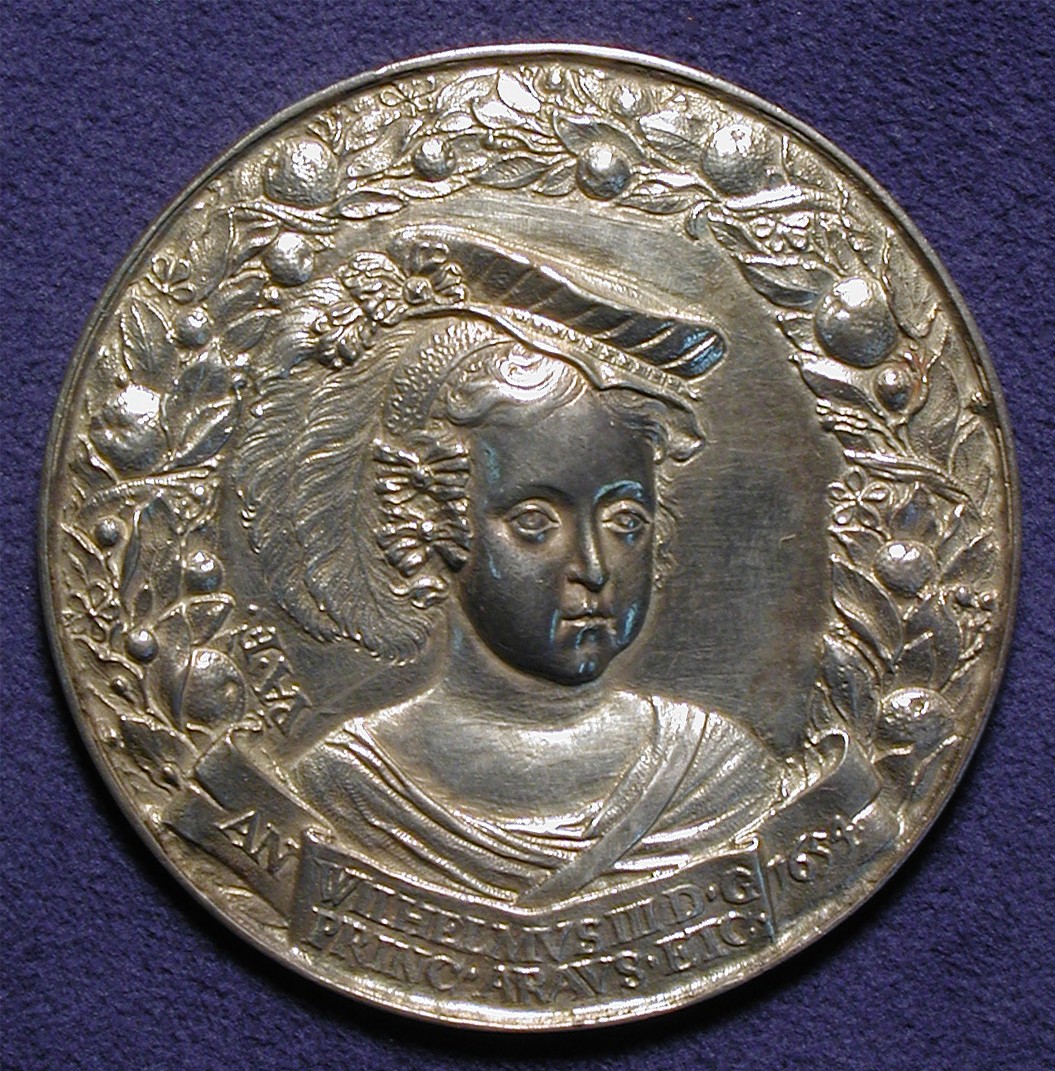

Historical and Commemorative
Medals
Collection of Benjamin Weiss
|
PRINCESS MARY AND PRINCE WILLIAM (III) OF ORANGE van ABEELE, Pieter: Netherlands, 1654, Silver, 65 mm Mary, Princess Royal (Mary Stuart 1631-1660) was Princess of Orange and Countess of Nassau as the wife of Prince William II. She was the eldest daughter of King Charles I of England and his wife, Henrietta Maria of France. Her other hereditary connections to England were as the sister of King Charles II and King James II. Her only child, Prince William of Orange (shown on the reverse of this medal), later reigned as King William III of England. Mary was the first daughter of a British sovereign to hold the title Princess Royal. She was co-regent for her son as Sovereign Prince of Orange from 1651 to 1660. William Henry of Orange (1650-1702) was born in The Hague in the Dutch Republic. He was the only child of stadtholder William II, Prince of Orange, and Mary, Princess Royal. Eight days before William was born, his father died of smallpox; thus William was the Sovereign Prince of Orange from the moment of his birth. In 1677 William married his first cousin Mary, elder surviving daughter of James, Duke of York, later James II of England. William and his wife Mary were crowned joint monarchs (William and Mary) of England, Scotland and Ireland in 1689. Their accession, known as the ‘Glorious Revolution’, marked an important transition towards parliamentary rule as we know it today. William’s ousting of his predecessor, the Catholic James II, ensured the primacy of the Protestant faith in Britain. As with most of van Abeele’s medals, this one consists of two plates joined at the edge by a broad rim. LINK to Portrait of Marriage of Mary Stuart and William II (Wikipedia) |
|